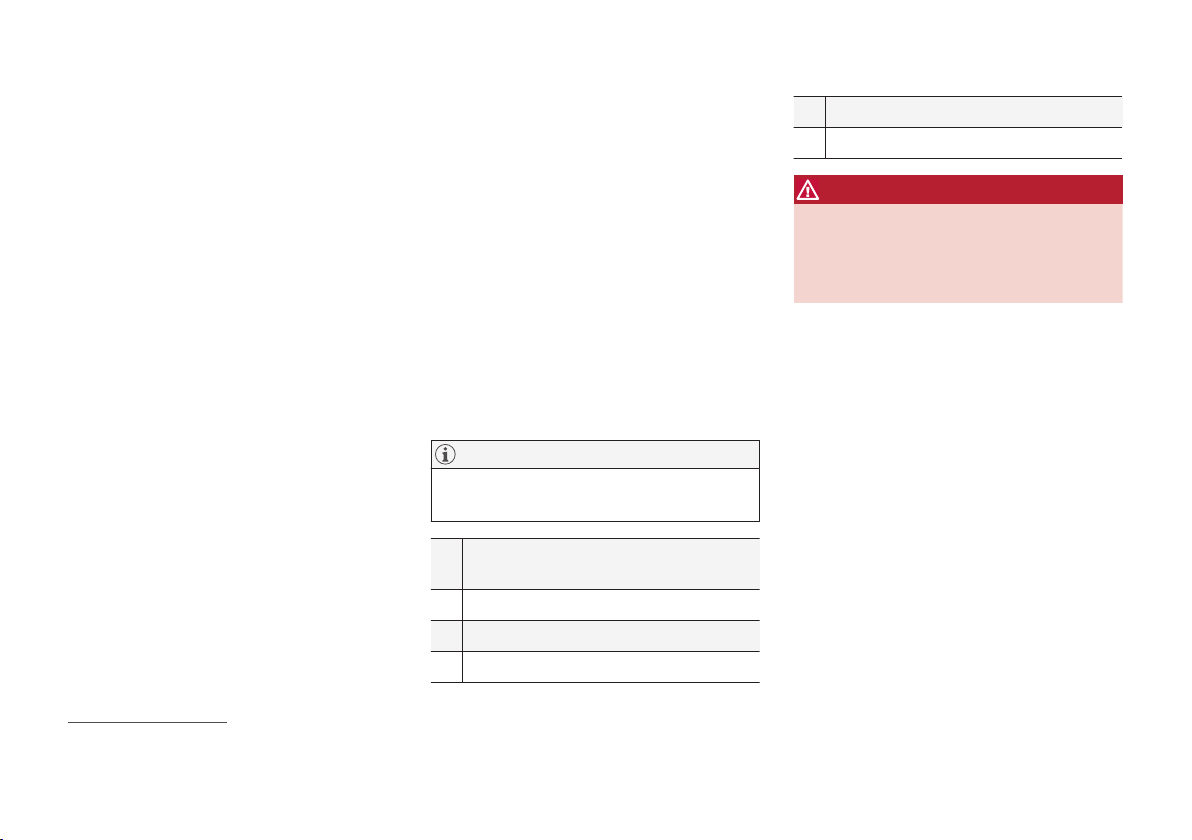Loading ...
Loading ...
Loading ...

WHEELS AND TYRES
337
Tyres - load index
Load index indicates a tyre's ability to carry a
certain load.
Each tyre has a certain capacity to carry a load, a
load index (LI). The car's weight determines the
load capacity required of the tyres. Lowest per-
missible index is specified in the tyre load index
table, see section "Specifications" in the printed
owner's manual.
Related information
•
Tyres - dimensions (p. 336)
•
Tyres - approved tyre pressures (p. 443)
•
Tyres - speed ratings (p. 337)
•
Tyres - maintenance (p. 332)
Tyres - speed ratings
Each tyre can withstand a certain maximum
speed and therefore belongs to a particular
speed rating (SS - Speed Symbol).
Tyre speed class must at least correspond with
the car's top speed. The table below indicates the
maximum permitted speed that applies for each
speed rating (SS). The only exception to these
regulations is the winter tyre (p. 338)
2
, where a
lower speed rating may be used. If such a tyre is
chosen, the car must not be driven faster than
the speed rating of the tyre (for example, class Q
can be driven at a maximum of 160 km/h
(100 mph)). Traffic regulations determine how
fast a car can be driven, not the speed rating of
the tyres.
NOTE
The maximum permitted speed is specified in
the table.
Q 160 km/h (100 mph) (only used on win-
ter tyres)
T 190 km/h (118 mph)
H 210 km/h (130 mph)
V 240 km/h (149 mph)
W 270 km/h (168 mph)
Y 300 km/h (186 mph)
WARNING
The car must be fitted with tyres which have
the same or a higher load index (p. 337) (LI)
and speed rating (SS) than specified. If a tyre
with too low a load index or speed rating is
used, it may overheat.
Related information
•
Tyres - dimensions (p. 336)
•
Tyres - load index (p. 337)
•
Tyres - direction of rotation (p. 333)
2
Both those with metal studs and those without.
Loading ...
Loading ...
Loading ...